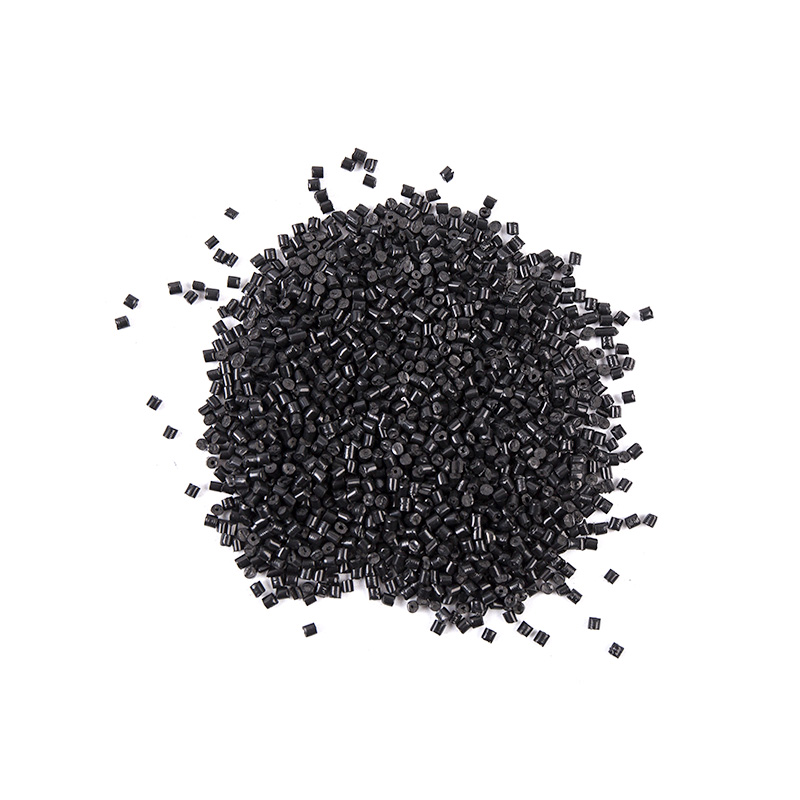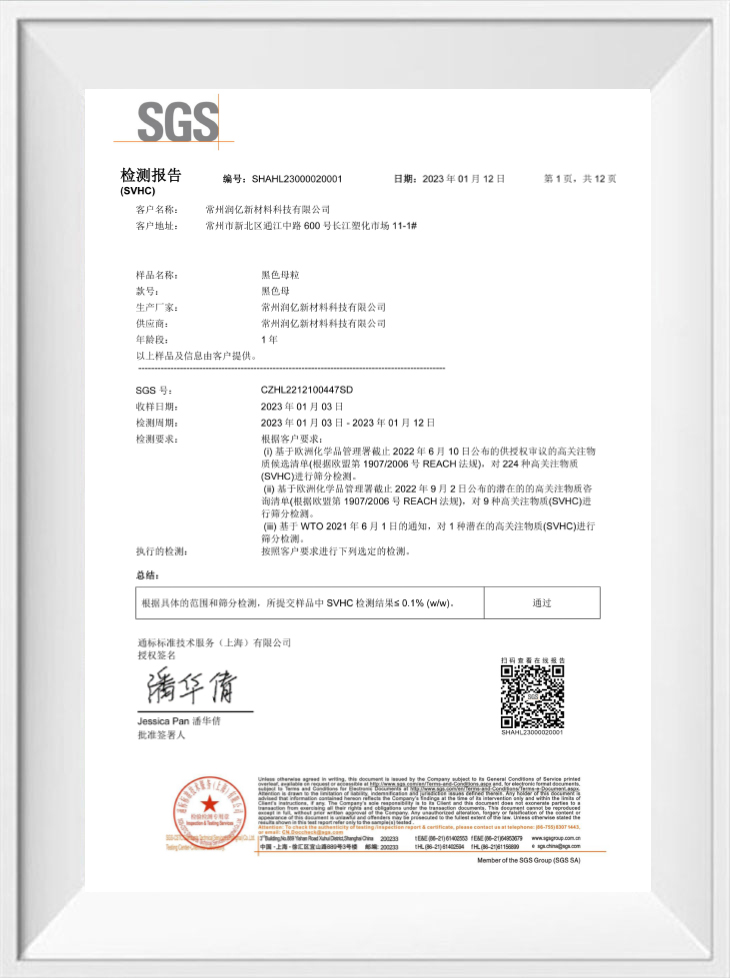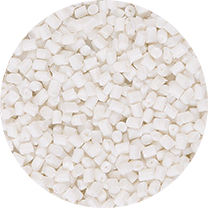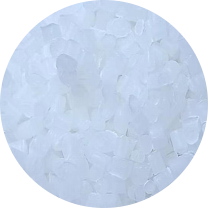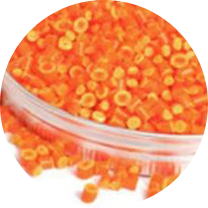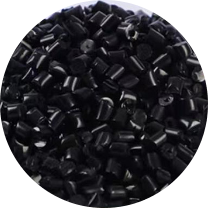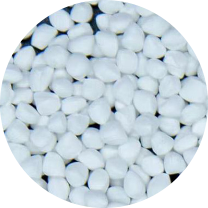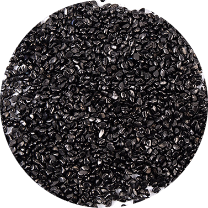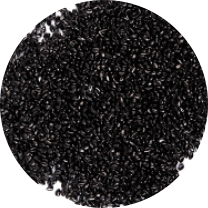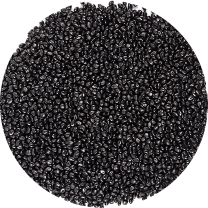Melt-Blown Polyester Yarn Black Masterbatch Color Carbon Masterbatch
Melt-Blown Polyester Yarn Black Masterbatch Color Carbon Masterbatch is specially designed for polyester yarn in the melt-blown process to provide a deep and stable black effect. The black pigment contained in it has been treated with a special process to ensure that the masterbatch can be evenly distributed in the fiber during the melt-blown process, thus giving the polyester filament an excellent black effect. Colored carbon masterbatches add rich color options to polyester fibers. The pigments in the carbon masterbatch are finely ground and mixed to make the colors more vivid and full. The addition of carbon masterbatch can also improve the strength and wear resistance of polyester fiber. This masterbatch is not only suitable for the melt-blown process, but is also widely used in the manufacturing process of other polyester fibers.
Description
Melt-blown PP special high flow black masterbatch, high coloring power carbon black, melt-blown material substrate preparation.
High dyeing power and shading power, good dispersion, no blocking network.
Add ratio: 5%~10%
| Appearance | Black Granules | Uniform black granules, free of impurities. |
| Carrier Resin | Polyester (PET) | Excellent compatibility with melt-blown polyester yarn. |
| Carbon Black Content | 20%-40% | High concentration of carbon black, adjustable based on customer requirements. |
| Melt Flow Index (MFI) | 20-50 g/10min (adjusted based on carrier resin) | Good fluidity, suitable for melt-blown processes. |
| Density | 1.2-1.4 g/cm³ | Close to the density of polyester resin, ensuring easy dispersion. |
| Heat Resistance | ≤ 300°C | Excellent stability at high temperatures, suitable for melt-blown processes. |
| Dispersibility | Excellent | Uniform dispersion of carbon black particles, no agglomeration. |
| Dosage | 1%-5% (adjustable based on color depth requirements) | Low addition rate, reducing production costs. |
| Applicable Processes | Melt-Blown, Spunbond, etc. | Suitable for various non-woven fabric production processes. |
| Environmental Compliance | RoHS, REACH compliant | Non-toxic and safe for use in medical, food contact, and other fields. |
| Packaging | 25kg/bag | Standard packaging, customizable based on customer requirements. |
Product Features
Uniform pigment dispersion: This product uses a special production process to evenly disperse carbon black pigment in the polyester matrix, avoiding pigment aggregation, thereby ensuring the consistency and stability of the fiber color.
Good coloring ability: It can provide polyester fibers with uniform and stable black, meeting the color requirements of different application scenarios.
Good heat resistance: In the melt spinning process of polyester fibers, a higher processing temperature is usually required. The masterbatch has good heat resistance and can remain stable under high temperature conditions without affecting the molding and performance of the fiber.
Improving fiber properties: In addition to the coloring function, the addition of carbon black can also give the fiber a certain conductivity and reduce the electrostatic effect of the fiber, thereby improving the performance of the fiber during processing and use.
Environmental protection: It complies with relevant environmental protection standards, such as RoHS certification.
Application scenarios
Textile industry: Mainly used to produce black polyester fibers, which can be used to make various textiles, such as clothing fabrics, home textile products, industrial fabrics, etc. For example, the production of black polyester shirt fabrics, black curtain fabrics, etc.
Industrial field: Due to its conductive properties, it can be used to produce antistatic fibers, which are widely used in electronic, chemical and other industrial places that are sensitive to static electricity. For example, it is used in antistatic work clothes and antistatic packaging materials in electronics factories.
Automotive interior: It can be used to produce interior materials such as car seat fabrics and roof fabrics. It not only provides a beautiful black appearance, but also meets the heat resistance and wear resistance of automotive interior materials.
Outdoor products: It can be used to make fabrics for outdoor tents, backpacks and other products. Black polyester fiber has good weather resistance and durability.
Get in Touch With Us
Who Are We?
Changzhou Runyi New Material Technology Co., Ltd.
News
-
What to Do When Fiber Breakage or Spinning Abnorm...
In the production of meltblown nonwoven fabrics, the quality and processing technology of Meltblown Masterbatch dir...
READ MORE -
How to Solve Surface Gloss Unevenness in Injectio...
Achieving a perfect, consistent surface finish is crucial for plastic products, yet Injection White Masterbatch oft...
READ MORE -
Using Carbon Black Masterbatch: How to Avoid Prod...
Introduction to Surface Quality in Carbon Black Masterbatch Applications The use of Carbon Black Masterbatch pres...
READ MORE -
Injection White Masterbatch: The Ultimate Guide t...
Injection White Masterbatch is a highly concentrated mixture of pigments or additives encapsulated within a carrier...
READ MORE -
Ultimate Guide to Carbon Black Masterbatch: Prope...
Carbon black masterbatch is a concentrated mixture of a high percentage of carbon black pigment evenly dispersed wi...
READ MORE


 English
English 中文简体
中文简体 한국어
한국어 عربى
عربى